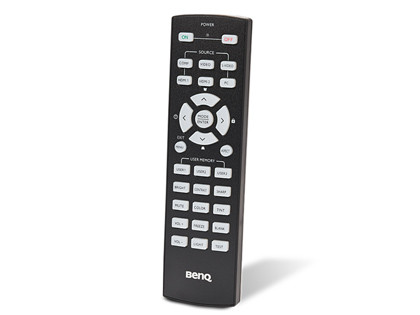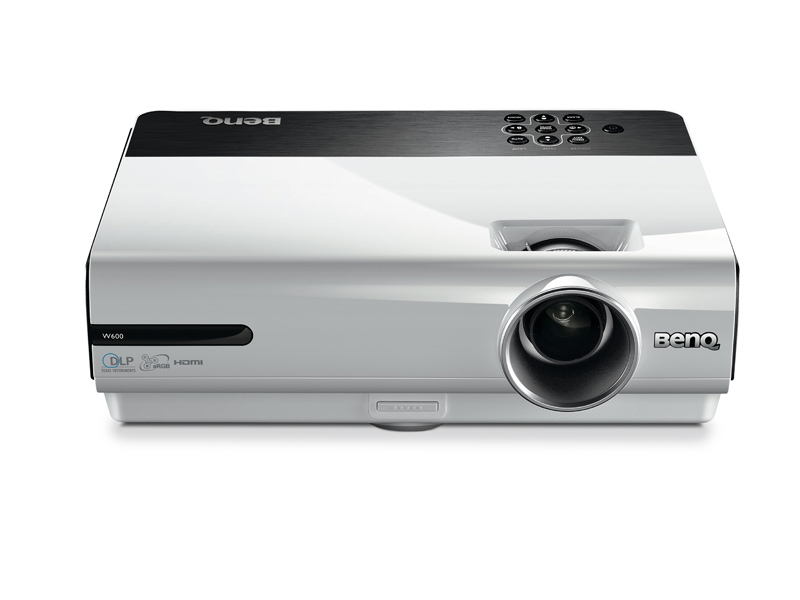TechRadar Verdict
Although its rainbow effect problem makes the W600 a no-no for serious users, its brightness and affordability should ensure it finds an audience
Pros
- +
Incredibly cheap
- +
Really bright
- +
Colourful pictures
- +
Well featured
Cons
- -
Sometimes very obvious rainbow effect
- -
Unsubtle colours
Why you can trust TechRadar
While really cheap projectors can function perfectly well in the business and education presentations market, their potential for use in a home cinema setup can usually be summed up in two words, neither of which can be repeated in a family magazine.
But today we find ourselves staring with some trepidation at budget brand BenQ's new W600: a dedicated home cinema projector costing just £500.
Features
To our surprise, the machine really seems to have genuine home cinema credentials. It's HD Ready, for a start, thanks to a 1,280 x 720-pixel resolution, two HDMIs and a component video input. Also unexpected is the W600's use of typically movie-friendly DLP technology rather than the LCD system usually employed at the ultra-cheap end of the market.

What's more, BenQ has managed to eke out a promising claimed contrast ratio of 3,000:1 – a much higher figure than we're accustomed to seeing at this price. Even more startling is the projector's claimed brightness of 2,600 ANSI Lumens, which, while it promises to produce pictures with enough brightness to be watchable in ambient light, also raises concerns about its black levels.
Yet more good news finds the core DLP 'engine' being supported by both Texas Instruments' BrilliantColour processing (to boost colour saturation), and UNISHAPE lighting. The latter adjusts the lamp output in sync with the six-segment colour wheel, to reduce DLP's dot crawl noise problem and improve the subtlety and richness of colours.
To its credit, the W600 even provides a surprisingly plentiful selection of picture adjustments, including, unbelievably at this price, a fairly sophisticated colour management system. One final feature about which we have mixed emotions is a built-in sound system.
Sign up for breaking news, reviews, opinion, top tech deals, and more.
This improves the machine's portability, since there's no need to worry about finding a separate audio system. However, the sound won't appear from anywhere near the picture and the W600's inevitably puny built-in speakers are hardly likely to rock your foundations.
Ease of use
Although the W600's menus are neatly presented and easy to navigate, and its remote control is well laid out and backlit, the lightbox is let down by having a puny optical zoom and no horizontal or vertical image shifting.
The former issue could make it difficult for you to get the image size you want, while the latter means you will very likely have to use image-distorting digital keystone correction to get the edges of the picture straight.

Performance
For a few minutes, we found ourselves staring agog at the quality of the W600's pictures. While they are fearsomely bright, blazing off our screen in a dark room, they also prove startlingly watchable in quite a bit of ambient light. This latter feature could be very appealing to casual users who like to show movies at social occasions.
The picture's brightness also helps it deliver some pretty extreme colours for the bottom end of the market. Especially as there's also a solid counterpoint to the image's bright bits in the shape of some respectable black levels.
To put this in perspective, there's more greyness around during dark scenes than you get with most of today's (far more expensive) DLP projectors. But the black level response is miles better than you'd get with a similarly cheap LCD model, and this factor gives the W600 a crucial advantage as a movie machine.
There's yet more good news with the discovery that the W600's HD images looking surprisingly crisp and clean, despite it only having an HD Ready resolution.
The more time you spend with the W600, however, the more you start to notice a few cracks in its eye-catching veneer. The most obvious chink, without doubt, is the W600's susceptibility to DLP's rainbow effect problem. While not particularly noticeable with particularly bright footage, the tell-tale stripes of red, green and blue can be seriously distracting, especially during darker moments of action.
It's important to stress here that some people are more susceptible to seeing the rainbow effect than others. But it would be a surprise if there was no-one out there who wasn't at least subliminally aware of the problem on at least a few occasions during a typical film.
Other lesser problems find the W600's colours sometimes looking a bit garish and lacking in subtlety; the picture sometimes betraying signs of the projector's pixel structure, especially around curved edges, and pictures exhibiting quite a bit of video noise at times, most notably when using the BrilliantColour feature.
Sound
We guess we need to conclude this performance section with a quick mention of the W600's audio capabilities, which, as we predicted, aren't great. They are adequate for sports or maybe social gaming uses, but there's nowhere near enough power or soundstage size to satisfy with a film.
Value
Not surprisingly, the W600's saving grace is its price. For, while its performance is undoubtedly flawed, it's ultra low price could enable casual users to overlook its shortcomings. Provided they're not particularly susceptible to the rainbow effect, that is.
Follow TechRadar Reviews on Twitter: http://twitter.com/techradarreview

John has been writing about home entertainment technology for more than two decades - an especially impressive feat considering he still claims to only be 35 years old (yeah, right). In that time he’s reviewed hundreds if not thousands of TVs, projectors and speakers, and spent frankly far too long sitting by himself in a dark room.
